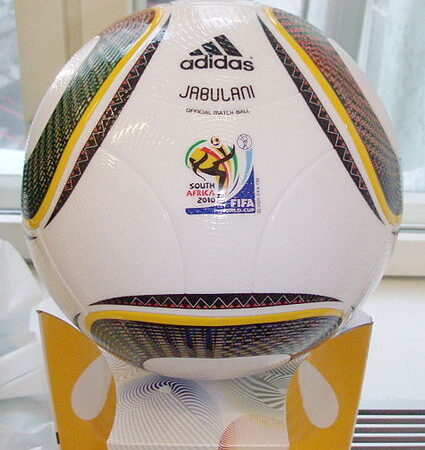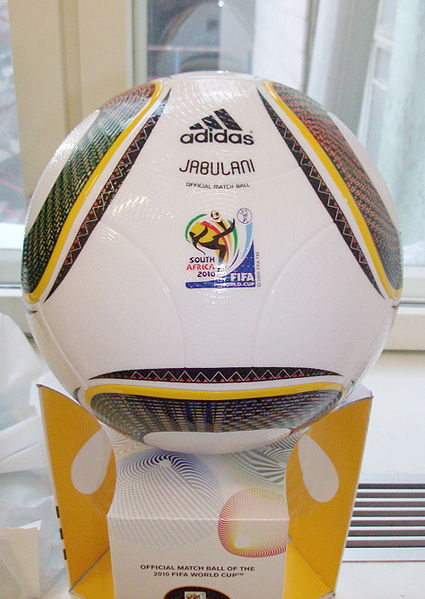World Cup balls

As if anyone needed more evidence that I spend time thinking about odd things and then blogging about them, here’s yet more evidence: this is a post about the science of the ‘Jabulani’ balls used at the World Cup in South Africa. More precisely I raise the question: is all the criticism more to do with altitude than with the ball itself?
Essentially loads of players and coaches at the World Cup, especially goalkeepers, have criticised the ball, while a few have praised it.
The main critique is that the ball is light, and that is swerves unpredictably.
So is it light? No. At 440g it’s at the upper end of FIFA’s 420-445g range for a ball. But undoubtedly there are many long passes – even from skillful passing teams like Argentina – that are over-hit. So is it that the ball feels lighter to kick than it actually is? The altitude of the matches could be to blame for this, as balls travel faster and further at 1700m above sea level, as explained in detail at the end of Page 1 of this New Scientist article.
And does it swerve unpredictably? More than the ball itself this too could be to do with altitude, as explained by this entry at the Engineering Sport blog, and their excellent animation. Essentially a curling shot that would score at sea level would not at the altitude of Soccer City in Johannesburg.
In short: at any of the high altitude venues at the World Cup the ball will travel faster, and curl less, than at the venues at sea level. Difference in temperature and humidity between venues also have an impact. Add in the fact that most teams have training bases at high altitude (for acclimatisation of the players) and could that be the reason all of them are complaining about the ball? It’s not to say that the complaints are not valid, but the issue might just be altitude and not the ball itself. As if all of that were not enough, changes in altitude also impact players’ performance – see the 1986 example at the top of the page here.
I would also add an additional issue to the mix here: the inflation of the balls. Just the same as a packet of crisps blows up when you have it in your luggage when taking off in an aeroplane, the same will be the case for balls in the World Cup at altitude. Are all balls inflated at the venues themselves? And is the pressure adjusted to deal with the altitude? Because a ball inflated to 1 bar at sea level will feel less hard than one at 1 bar at altitude.
So what is to be done?
With no new balls available coaches just need to take it into account in their tactics. In Pretoria and Johannesburg shoot from far out, and go for power but keep the ball down. In Durban or Cape Town go for a curler, with Beckham style shots up and over the wall. In the medium term the solution would be to design different balls for different altitudes, with a heavier ball to be used at altitude. A heavier exterior of the ball would also allow similar levels of curl as achieved with the lighter ball at sea level. So for all the science that went into the Jabulani, did they take adequate account of the altitude (or were they even allowed to do so?) – I suspect not.
